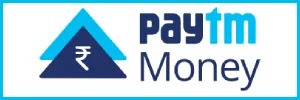Subdued oil prices will help bring down the current account deficit
Year 2006 ended on a positive note for the Indian rupee and 2007 could see it climbing to new heights against the US dollar. The rupee would continue to get support from robust capital inflows, just as it did in the year 2006.
Prospects of higher interest rates as a hawkish Reserve Bank of India (RBI) tackles rising inflation will favour the rupee. Price action in the international markets, with greenback expected to slide further against the other majors and the Chinese Yuan likely to appreciate more, will also provide positive momentum.
Subdued oil prices will help bring down the current account deficit and reduce the downward pressure on the rupee. Local stock market correction and a seasonal rebound in the US dollar in the first quarter of a year remain the key near-term risk.
The last week of 2006 saw the Indian unit appreciate by 0.7% versus the greenback, taking its total gains in the year to 1.74%. Against other major currencies its performance was mixed. The rupee gained against the yen but depreciated sharply against the euro and the pound sterling.
In 2006, India emerged as a key investment destination among emerging markets. Overall investment climate in the country improved, helped by record economic growth, continuing economic reforms and unprecedented corporate sector performance.
The stock market registered yet another year of stellar performance. The BSE Sensex climbed 47%, backed by foreign portfolio investments. While the RBI continued to raise rates, relative yield advantage on local assets improved.
The economy thus witnessed robust capital inflows from various sources such as foreign direct investment, external commercial borrowings and portfolio inflows. That turned out to be the key driver behind the rupees strength.
The rupees gains were checked by the burgeoning current account deficit, which grew on account of a larger merchandise trade deficit. As per the latest data, current account deficit for the first half of the current financial year amounted to $11.7 billion, which was about $4.5 billion higher than the deficit in the first half of previous financial year. RBIs market intervention also curtailed rupees gains. The central bank was particularly active during the first few months of the year and in the month of November.
Within the Asian region (excluding Japan), however, the rupee remained an underperformer. Thai Baht emerged at the top, registering gains of 11.4% versus the greenback during the year. That led to the Thai central bank imposing heavy restrictions on short capital inflows. The Chinese Yuan gained by 3.3%, as the Chinese authorities allowed greater appreciation of their currency following mounting American pressure to do so.
In the international market, price action among major currencies was dictated by the monetary policy outlook and action of the key global central banks. The pound sterling emerged as the outperformer among the major global currencies in 2006. It appreciated by 13.8% versus the greenback as the Bank of England (BOE) surprised the markets with a 0.25% rate hike in August and followed by another hike in November.
And, with the bulk of recent economic data from the UK looking quite robust, money markets have priced in two more 0.25% hikes by the first half of 2007.
The other European major, the Euro, gained 11.5% against the greenback over the year, as strong euro-zone growth and inflation prompted the European Central Bank (ECB) to steadily raise interest rates. Moreover, hawkish commentary at the ECBs December monetary policy meeting led to expectations of two 0.25% hikes in the first half of 2007.
In contrast to its European counterparts, the US Federal Reserve (Fed) paused its rate hike cycle in August, after 17 rate increases from June 2004 through June 2006. Since then, the Fed has kept the funds rate steady at 5.25%. Now, with the bulk of the US data showing a broader sub trend growth path, the market assumes that the Fed would not restart its tightening cycle in 2007. With its yield advantage against the European majors squeezing over the year, the greenback sustained severe losses.
One currency which suffered the most from the monetary policy centric price action was the Japanese yen. By the end of the year, the yen had moved to its weakest against a variety of currencies, and on real effective trade weighted basis, to its weakest position since the Plaza Accord over 20 years ago.
This performance was consistent with myriad economic data that suggested there was no urgency for the Bank of Japan to hike rates further, after the first policy tightening to 0.25% in July. Data suggests that policy action in Japan would follow on a slow path going forward. Given the low interest rates in Japan, the Yen emerged as the favourite currency for funding carry trades and other global investments.
The author is senior economist, ABN Amro Bank. Views expressed herein are personal. E-mail: [email protected]
The author is senior economist, ABN Amro Bank. Views expressed herein are personal. E-mail: [email protected]
Source : dnaindia.com
Send free SMS to your Friends on Mobile from your Yahoo! Messenger. Download Now! http://messenger.yahoo.com/download.php








